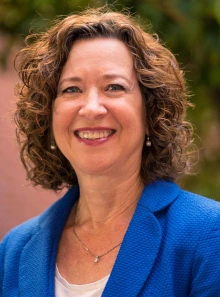How a Smoking Cessation App Applied Guided Imagery for Better Health

Judith Gordon, PhD
When University of Arizona College of Nursing Associate Dean of Research Judith Gordon, PhD, started her work more than three decades ago, her aim was to figure out ways to encourage people to quit tobacco.
“In the 1980s, the prevalence of smoking in the United States was well over 25%. The rate is now less than 14%,” Dr. Gordon said. “We’ve made great progress, and that’s through a lot of hard work from a lot of people doing many different types of interventions from policy down to individual tobacco cessation interventions.”
Those interventions have included nicotine patches and gum, prescription smoking-cessation medications, and “quitlines” offering coaching and resources to smokers who call, hoping to wean themselves off cigarettes.
A new item in the toolkit
In recent years, Dr. Gordon has been investigating another strategy in the smoking-cessation toolkit: guided imagery. The hope is that, by “mentally rehearsing” the quitting process, repeated visualization will build neural pathways in the brain to make it easier to quit. Dr. Gordon’s previous small studies hinted that it could be an effective alternative to the traditional quitline model, appealing to people who might not call.
“Quitlines can be fairly effective, but they generally reach around 1% to 2% of tobacco users,” Dr. Gordon said.
In partnership with colleagues at the Mel and Enid Zuckerman College of Public Health’s ASHLine, Dr. Gordon’s team studied a guided imagery intervention delivered over the telephone to people interested in quitting tobacco. They compared quit rates between the guided imagery intervention and a standard cognitive-behavioral control, with all participants receiving coaching sessions over the phone, nicotine patches or lozenges, and web-based tools. Both groups — those receiving guided imagery and those receiving the standard intervention — ended up with “basically equivalent cessation rates,” Dr. Gordon says.
“Guided imagery appeared to work as well, or close to as well, as the standard behavioral approach, and participants reported high satisfaction with guided imagery,” Dr. Gordon said. “We think guided imagery may appeal to some people who aren’t interested in or have not previously benefited from standard cognitive behavioral therapies, or who wouldn’t normally call a quitline. There is no magic bullet, one-size-fits-all approach to smoking cessation. We need to give people options to choose from.”
Bringing guided imagery to smartphones
To make guided imagery more accessible to people hoping to quit tobacco, Dr. Gordon led the development of a smartphone app called “See Me Smoke-Free,” which targeted women who wanted to quit smoking while avoiding weight gain.
“It was a multi-behavioral app,” said Dr. Gordon, whose background is in clinical psychology. “Although the primary focus was smoking cessation, we also helped women increase their physical activity and eat a healthy diet. We had very high quit rates and the women reported minimal weight gain.”
The COVID-19 pandemic saw a lot of researchers pivoting to coronavirus, and Dr. Gordon was no exception. See Me Smoke-Free’s sister app, called See Me Serene, offers guided imagery to those suffering from stress arising from spending too much time indoors away from nature.
Harnessing technology to improve health
Dr. Gordon’s interest in the intersection between health and technology was born from a need to empower people to take their health into their own hands.
“We know a lot about what works to help people improve their health, but there’s a gap between knowledge and practice,” Dr. Gordon said. “Using technology can help bridge that gap, increasing the reach of evidence-based interventions.”
While not everyone has a smartphone, Dr. Gordon hopes their increasing use across all demographic groups will help democratize access to self-help tools.
“You can use that platform to reach people who could benefit from enhanced access to health care,” Dr. Gordon said. “Even though there’s still a digital divide, that divide is rapidly closing.”
By investigating new strategies to expand options for people hoping to improve their health, and by increasing access to these tools, Dr. Gordon hopes more people will be able to find approaches that work for them.
“My colleagues and I have been able to help people quit smoking, which can help prevent cancer, cardiovascular disease and a host of other smoking-related health problems,” she said. “What drives me is the hope that we can improve individual and public health.”

